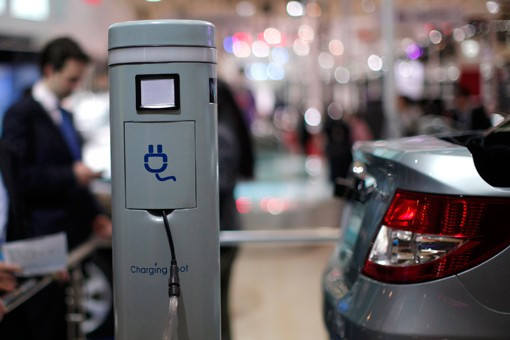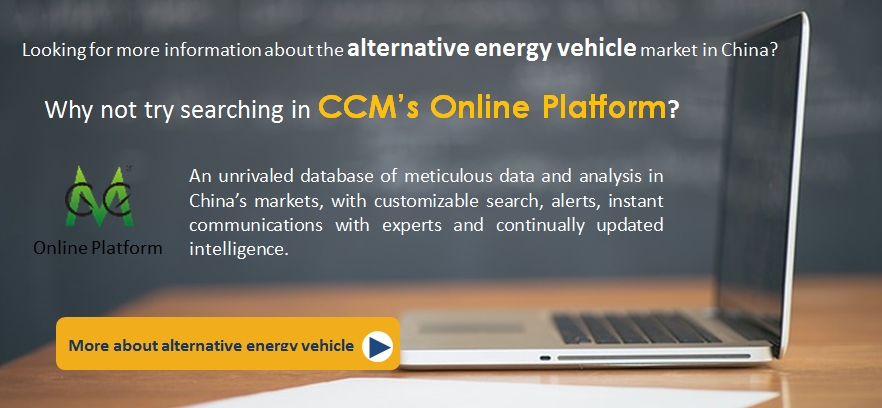In 2015, BYD surpassed Nissan, a sophisticated global giant player, to be No.1 in the alternative energy vehicle industry. Though the industry is booming in China, its sales are mainly from low- and medium-marketed products. It is a bubble born from government subsidy, according to CCM.

Source: Baidu
In 2011-2015, China produced 488,000 alternative energy vehicles, roughly approaching the "unattainable' 12th Five-year Plan (2011-2015) goal of 500,000, thanks to policy support, according to China Business News.
Domestic sales
In Jan.-Oct. 2015, there were over 170,000 alternative energy vehicles sold in China.
"The full-year sales of alternative energy vehicle would reach 220,000-250,000', said Xu Yanhua, undersecretary general of the China Association of Automobile Manufacturers (CAAM) in Dec. 2015. Particularly, 170,000 alternative passenger cars were sold in 2015, according to the China Passenger Car Association (CPCA).
Further in 2012-2015, at least 330,000 alternative energy vehicles were sold.
Top companies' sales
BYD Company Limited (BYD) took the place of Nissan to be the No.1 manufacturer in the world, regarding its sales in Jan.-Nov. 2015. In 2014, it ranked No.7, No.40 in 2013.
In addition, Zhejiang Kandi Vehicles Co., Ltd. (Zhejiang Kandi) and Zotye Holding Group (Zotye Auto), another two alternative energy vehicle producers in China, were also in the global top 10 list. It was the first time for the latter to come to the fore.

Development of China's alternative energy vehicle market
In 2015, China became the biggest alternative energy vehicle market, taking the place of the US (sales: 123,000 units).
Actually, compared with the US, China developed the alternative energy vehicle market much later:
-
2012-2013: only around 13,000 and 17,000 vehicles sold respectively
-
2014: sales up to 75,000, thanks to policy support. Specifically, BYD and Zhejiang Kandi both were in the world's top 10 list
-
2015: Zotye Auto also listed in top 10, by selling 24,500 units
Drawbacks in China's alternative energy vehicle market
· Low- and medium-marketed alternative energy vehicles mostly
"China's alternative energy vehicle industry is not strong enough to be the No.1 globally, since its sales are mainly from low- and medium-marketed ones', said Cui Dongshu, secretary general of the CPCA.
In 2015, sales of 63% of battery electric vehicles were from A00 grade, and that of all-electric passenger cars were mainly contributed by A0 grade. In a word, China's electric vehicle market was dominated by these two economical grades.
In addition to BAIC Motor Corporation Ltd.'s E-series, Zotye Auto's Cloud-100 series and Zhejiang Kandi's Panda series also performed well last year: sales volume was over 15,000 and 20,000 respectively. Their sales prices were less than USD7,692 (RMB50,000) and USD9,231 (RMB60,000) separately if government subsidies calculated.
China's alternative energy vehicle sales were not driven by market but government subsidy. Currently, more than half of the sales are for public-use sectors, such as leasing companies, government departments, and public transportation companies. However, cities with restriction on the number of vehicle licenses (such as Beijing and Shanghai) have more private alternative energy cars than those not.
In 2015, China spent over USD1.54 billion (RMB10 billion) on subsidy for alternative energy vehicle, showing that the industry enjoyed greater government support in China than in any other countries.
Gradually, the industry focus is being switched from mass production to quality improvement, to deal with problems that China has no technology for core components and that the development is restricted by power battery technology.
Cui Dongshu predicted that the growth rate of the alternative energy passenger car segment may be cut down to 60-100% in 2016, while the alternative energy commercial vehicle sector will continue its rapid increase in fields of logistics, government public function and administration, and finally will take the place of traditional vehicles. Therefore, the elimination but chaotic market will continue this year.

About CCM:
CCM is the leading market intelligence provider for China's agriculture, chemicals, food & ingredients and life science markets. Founded in 2001, CCM offers a range of data and content solutions, from price and trade data to industry newsletters and customized market research reports. Our clients include Monsanto, DuPont, Shell, Bayer, and Syngenta. CCM is a brand of Kcomber Inc.
For more information about CCM, please visit www.cnchemicals.com or get in touch with us directly by emailingecontact@cnchemicals.com or calling +86-20-37616606.
Tag: alternative energy vehicle